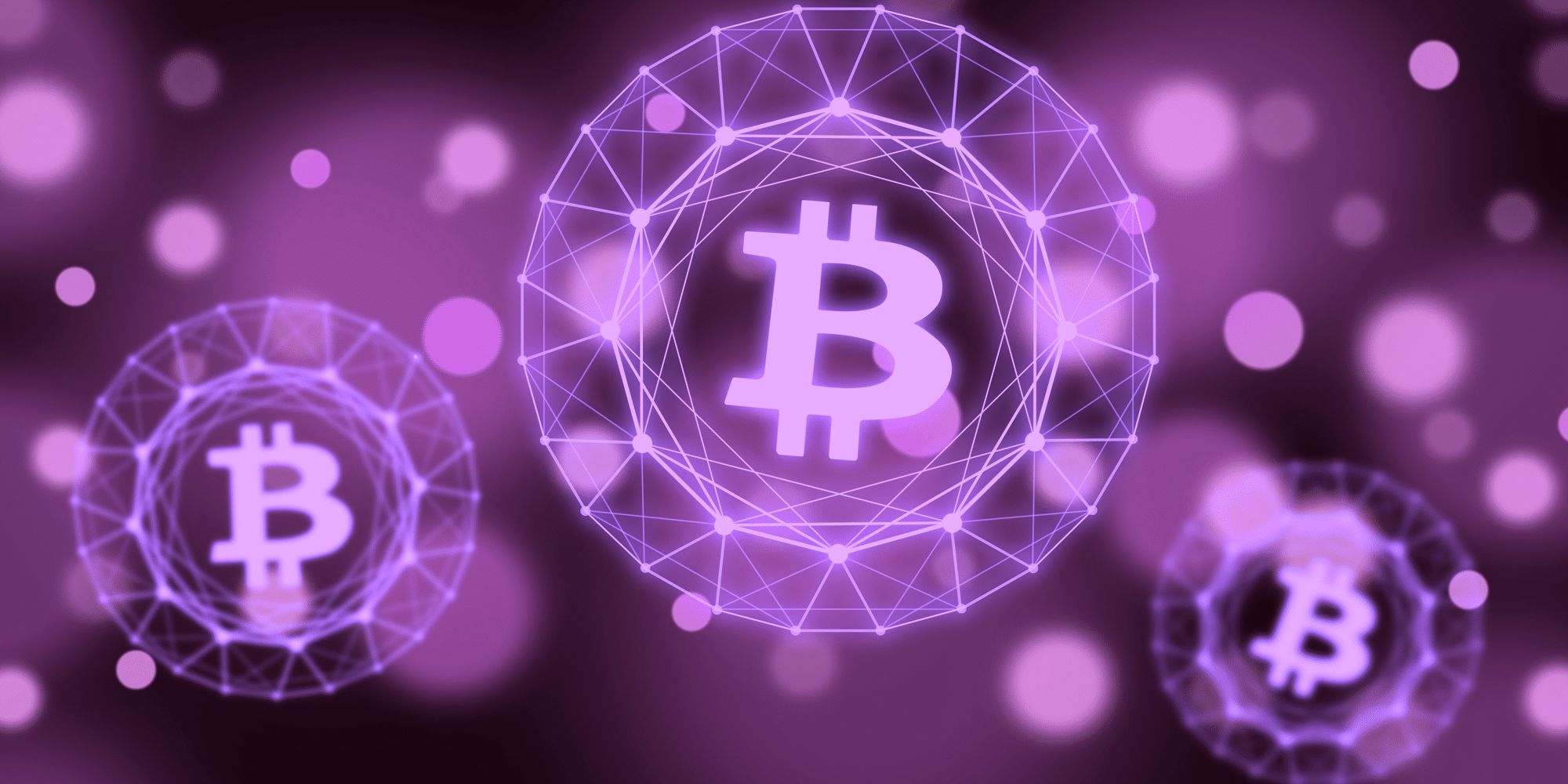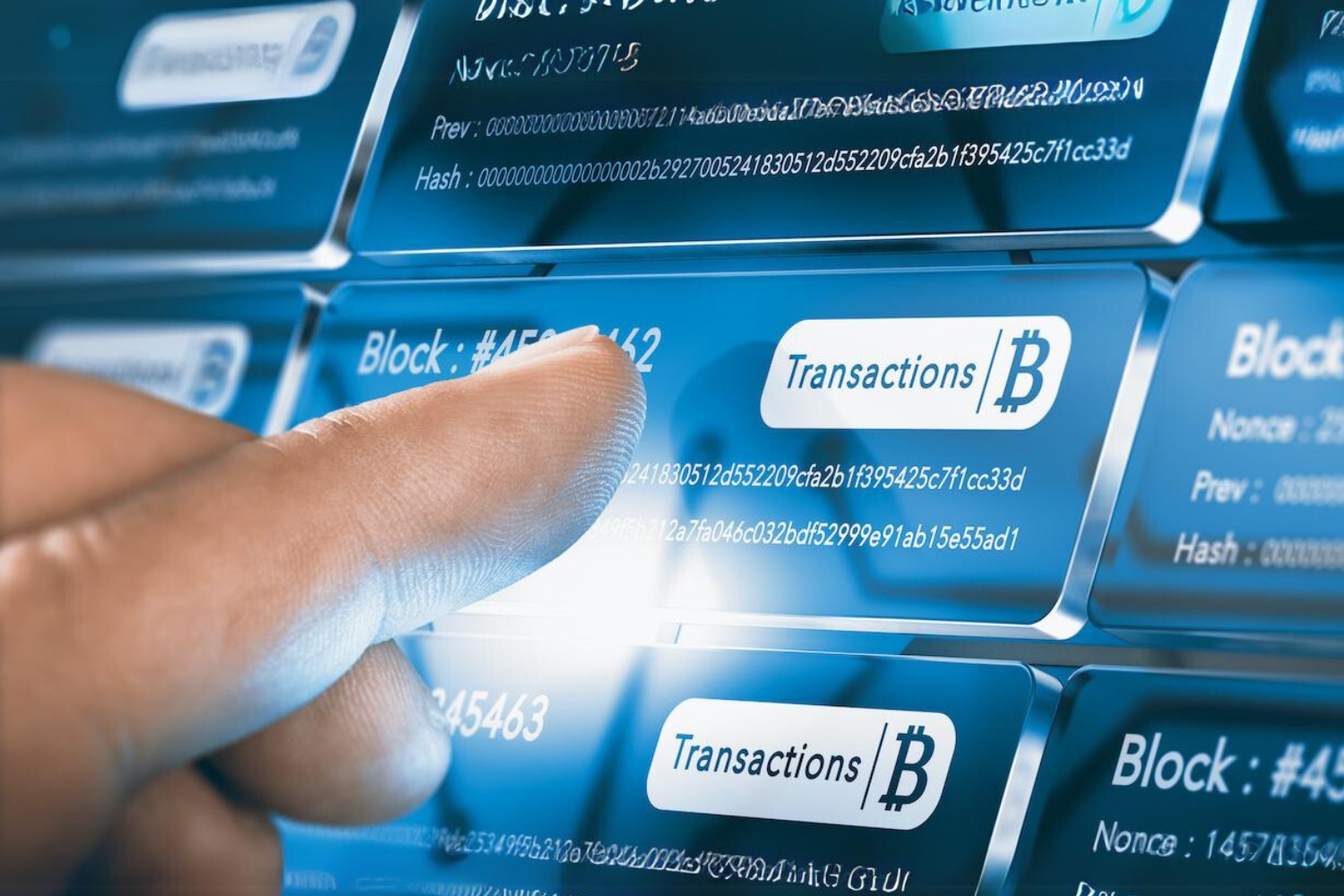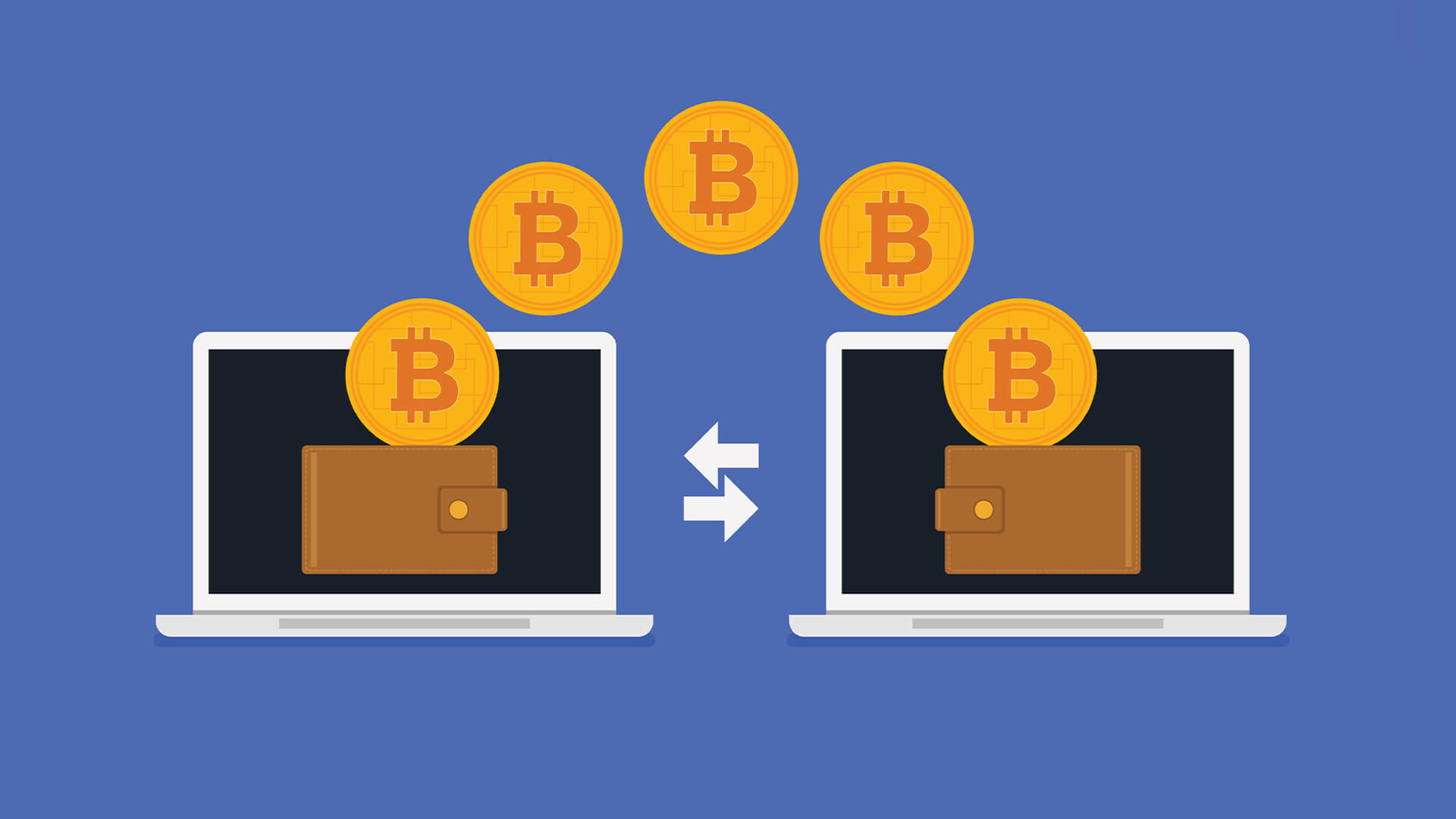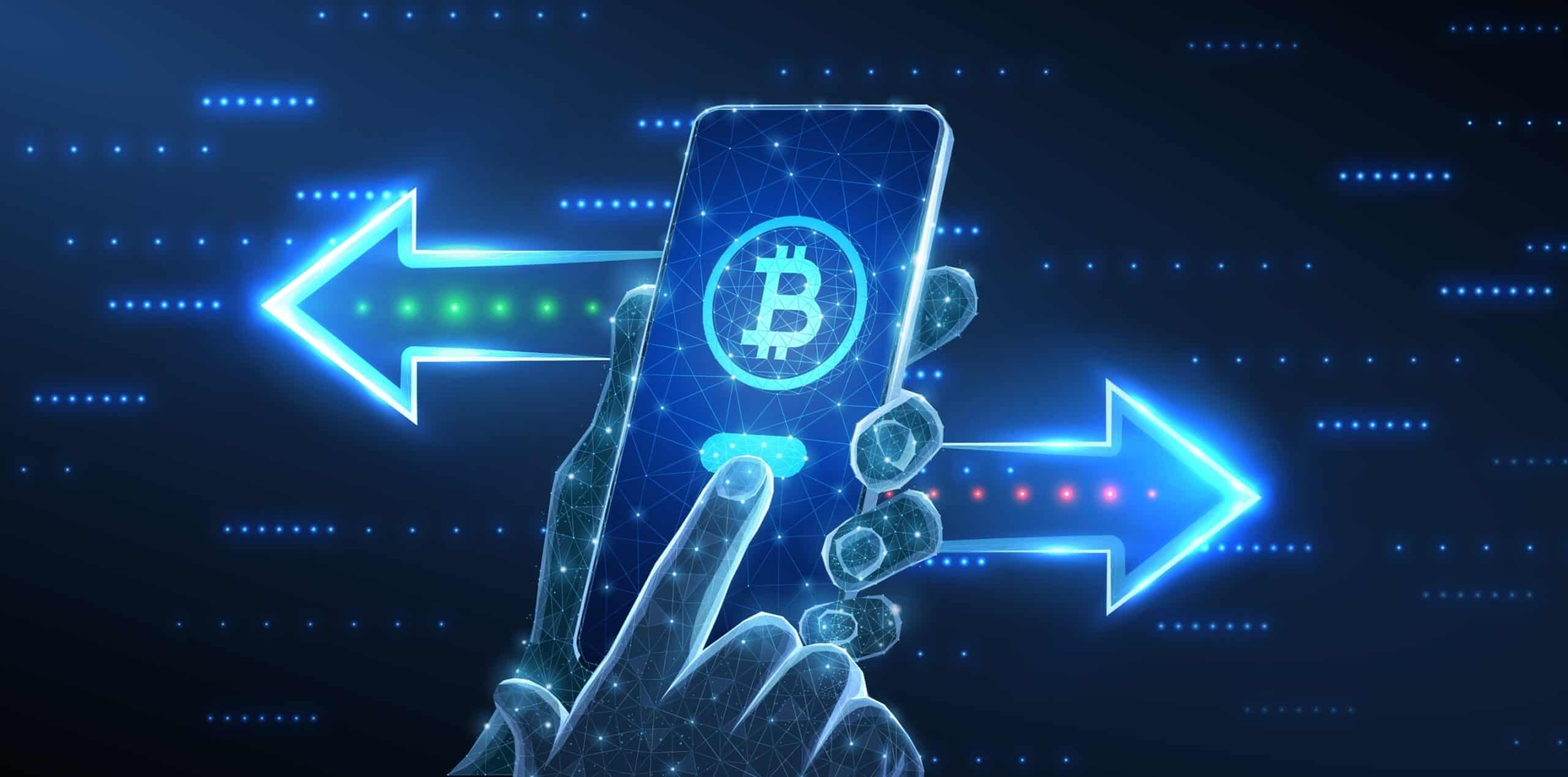Introduction
Welcome to the world of Bitcoin transactions, where buying and selling can happen in the blink of an eye. Bitcoin, as a decentralized digital currency, has gained immense popularity in recent years. However, just like any other financial transaction, there may be instances where you need to cancel or modify a Bitcoin transaction.
In this article, we will explore the concept of unconfirmed Bitcoin transactions and the various methods to cancel them. Whether you made an accidental payment or simply changed your mind, we will guide you through the steps to ensure a smooth cancellation process.
Understanding the complexities of Bitcoin transactions will provide you with the knowledge needed to handle unconfirmed transactions effectively. We’ll delve into why some transactions go unconfirmed and the potential risks associated with them. By grasping these concepts, you’ll be better equipped to navigate the cancellation process.
Furthermore, we’ll outline four methods to cancel an unconfirmed Bitcoin transaction. These methods include the Replace-by-Fee (RBF) approach, double-spending, waiting for the transaction to be dropped, and reaching out to support or miners. With these strategies, you’ll have a range of options to choose from, depending on your specific situation.
Before we dive into the cancellation methods, it’s crucial to note that these approaches may not be applicable in every scenario. It’s essential to weigh the risks and consider the implications of each method before proceeding. Now, let’s explore the ins and outs of unconfirmed Bitcoin transactions and discover how to cancel them.
Understanding Bitcoin Transactions
Before we delve into the intricacies of unconfirmed Bitcoin transactions, let’s first understand the basics of how Bitcoin transactions work. At its core, a Bitcoin transaction involves the transfer of digital currency from one user to another.
Every Bitcoin transaction is recorded on a public ledger called the blockchain. This decentralized ledger ensures transparency and security by storing the transaction history of all Bitcoin users. Each transaction consists of inputs, which are the funds being spent, and outputs, which are the recipients of those funds.
When someone initiates a Bitcoin transaction, it goes through a verification process conducted by nodes on the Bitcoin network. These nodes act as validators and ensure that the transaction meets certain criteria, such as having sufficient funds and valid digital signatures.
Once the transaction is verified, it is added to a pool of unconfirmed transactions waiting to be included in a block. Miners, who are individuals or entities that dedicate computational power to the network, compete to solve complex mathematical puzzles to add the block to the blockchain.
When a miner successfully solves a puzzle, they add the block to the blockchain, confirming the transactions contained within it. This confirmation process adds a layer of security and ensures that the transaction is valid and irreversible.
However, not all transactions are confirmed immediately. Some transactions may remain unconfirmed for various reasons, which we will explore in the next section. Unconfirmed transactions can cause inconvenience and uncertainty, but fortunately, there are methods to address this issue and cancel the transaction if necessary.
Now that we have a basic understanding of Bitcoin transactions, let’s proceed to explore the concept of unconfirmed transactions and why they occur.
What is an Unconfirmed Transaction?
An unconfirmed transaction in the world of Bitcoin refers to a transaction that has been broadcasted to the network but has not yet been included in a block on the blockchain. In simpler terms, it means that the transaction is still pending confirmation.
When you initiate a Bitcoin transaction, it is added to a pool of unconfirmed transactions, also known as the mempool. Miners select transactions from the mempool to include in the next block they mine. These blocks are added to the blockchain, which confirms the transactions and makes them irreversible.
However, due to various factors, some transactions may take longer to be included in a block, resulting in them remaining unconfirmed for a period of time. The time it takes for a transaction to be confirmed depends on factors such as network congestion, transaction fees, and the number of miners actively mining blocks.
During this unconfirmed state, the transaction is vulnerable to alterations or cancellation. The recipient of the transaction cannot consider the funds as fully received until the transaction receives the necessary confirmations and becomes a permanent entry on the blockchain.
It’s important to note that while most transactions eventually get confirmed, there may be instances where a transaction remains unconfirmed indefinitely. This could happen if the transaction fee is too low, leading to miners prioritizing other transactions with higher fees.
Unconfirmed transactions can cause uncertainty and inconvenience, especially if you need the funds to be available immediately or if you made a mistake in the transaction details. In such cases, it becomes crucial to understand the methods available to cancel or modify the unconfirmed transactions which we will explore in subsequent sections.
Now that we have a clear understanding of what constitutes an unconfirmed transaction, let’s explore the reasons why transactions may remain unconfirmed.
Reasons for Unconfirmed Transactions
Unconfirmed Bitcoin transactions can occur due to various reasons, and understanding these factors can help shed light on why a transaction may be delayed or remain unconfirmed. Let’s explore some common reasons for unconfirmed transactions:
- Network Congestion: One of the primary factors that can lead to unconfirmed transactions is network congestion. During periods of high transaction volume, such as during market fluctuations or when there is a surge in Bitcoin activity, the network can become congested, causing delays in transaction confirmations. Miners prioritize transactions with higher fees, resulting in lower fee transactions taking longer to get confirmed.
- Low Transaction Fees: When initiating a Bitcoin transaction, users can choose the transaction fee they are willing to pay. Higher transaction fees generally incentivize miners to include the transaction in their blocks. If a transaction has a relatively low fee compared to other transactions in the mempool, it may take longer to get confirmed or even be ignored by miners altogether.
- Blockchain Forks: Occasionally, the Bitcoin network may experience a temporary split, resulting in multiple versions of the blockchain. This can happen due to protocol upgrades or other technical issues. When a blockchain fork occurs, it can lead to delays in confirming transactions until the fork is resolved and the network returns to a single, synchronized blockchain.
- Unconfirmed Parent Transactions: Bitcoin transactions can have dependencies on other transactions, known as parent transactions. If a parent transaction remains unconfirmed or is dropped from the mempool, it can cause delays or even render the dependent transaction unconfirmed. This can happen when using techniques like Replace-by-Fee (RBF) or when trying to spend from an address with unconfirmed transactions.
- Malformed Transactions: Transactions that do not meet the proper formatting or contain errors can be rejected by the network and remain unconfirmed. It is essential to double-check the transaction details, including the recipient’s address and the amount being sent, to ensure the transaction is properly formatted and ready for confirmation.
These are just a few of the reasons why Bitcoin transactions can remain unconfirmed. Understanding these factors can help you determine the best course of action to address unconfirmed transactions. In the next section, we will discuss the potential risks associated with unconfirmed transactions.
Risks of Unconfirmed Transactions
Unconfirmed Bitcoin transactions come with a set of risks that users need to be aware of. While the Bitcoin network is designed to be secure and efficient, unconfirmed transactions can introduce uncertainties and potential vulnerabilities. Let’s explore some of the risks associated with unconfirmed transactions:
- Transaction Reversibility: When a Bitcoin transaction is unconfirmed, it is still reversible. This means that the sender can potentially cancel or modify the transaction before it gets confirmed. While this feature can be advantageous in certain situations, it also opens up the possibility of fraudulent activities, such as double-spending or attempting to defraud the recipient.
- Potential Loss of Funds: Unconfirmed transactions carry a risk of funds getting stuck or lost in limbo. If a transaction remains unconfirmed for an extended period or gets dropped from the mempool, the funds involved in the transaction may not reach the intended recipient. This can lead to financial losses, especially if the transaction involved a significant amount of Bitcoin.
- Inconvenience and Delayed Transactions: Unconfirmed transactions can cause inconvenience and delays for both senders and recipients. The recipient cannot consider the funds as fully received until the transaction is confirmed, which can disrupt business operations or personal financial planning. Additionally, the sender may encounter difficulties in managing their finances if the transaction does not proceed as expected.
- Increased Vulnerability to Attacks: Unconfirmed transactions are more vulnerable to various attacks, such as network-based attacks, double-spending attempts, and other fraudulent activities. Hackers or malicious actors may attempt to manipulate the unconfirmed transaction to their advantage, compromising the security and integrity of the transaction.
- Dependence on Miners and Network Conditions: The confirmation of a Bitcoin transaction relies on miners including the transaction in a block and the overall network conditions. Factors such as network congestion, mining fees, and blockchain forks can all impact the speed and likelihood of a transaction getting confirmed. Users need to be aware that their transactions are subject to these external factors beyond their control.
Understanding the risks associated with unconfirmed transactions emphasizes the importance of taking measures to address and minimize these risks. In the next section, we will explore the methods available to cancel or modify unconfirmed Bitcoin transactions.
How to Cancel an Unconfirmed Bitcoin Transaction
If you find yourself with an unconfirmed Bitcoin transaction, there are several methods you can employ to cancel or modify the transaction. The method you choose will depend on your specific circumstances and the desired outcome. Let’s explore four common approaches:
- Method 1: Replace-by-Fee (RBF): This method allows you to replace an unconfirmed transaction with a new one that includes a higher transaction fee. RBF functionality must be enabled when initiating the original transaction. By increasing the fee, you incentivize miners to prioritize your new transaction, replacing the old one. Wallets that support RBF typically provide an option to “bump” the transaction fee. Note that not all wallets and exchanges support RBF.
- Method 2: Double-Spend the Transaction: This approach involves creating a new transaction that spends the same funds as the unconfirmed transaction but with a higher fee. By broadcasting the new transaction, miners may choose to prioritize it over the unconfirmed one, effectively replacing it. However, this method carries risks and should be used cautiously, as it can be seen as an attempt to defraud the network.
- Method 3: Wait for the Transaction to be Dropped: In some cases, if a transaction remains unconfirmed for an extended period, it may eventually be dropped from the mempool. This can happen due to network congestion or other factors. By waiting for the transaction to be dropped, it becomes as if the transaction never occurred. However, this method requires patience and offers no guarantee of cancellation.
- Method 4: Contacting Support or Miners: If your transaction is critical or time-sensitive, you can reach out to the customer support of your wallet provider or exchange. They may be able to assist you in canceling or expediting the transaction. Additionally, you can try contacting miners directly to request prioritization of your transaction. However, keep in mind that this method may not always be successful, as miners have their own criteria for selecting transactions.
It’s important to note that not all methods may be applicable or suitable for every situation. Assess the risks, urgency, and feasibility of each method before deciding on the approach to take. Additionally, be aware that these methods may not guarantee immediate cancellation of the unconfirmed transaction, and there is always a level of uncertainty involved.
By employing these methods, you have a range of options to address and potentially cancel unconfirmed Bitcoin transactions. However, prevention is always better than cure, so it’s advisable to double-check transaction details and set appropriate fees to avoid unconfirmed transactions whenever possible.
Method 1: Replace-by-Fee (RBF)
Replace-by-Fee (RBF) is a method that enables users to replace an unconfirmed Bitcoin transaction with a new one that includes a higher transaction fee. This approach allows for the prioritization of the new transaction, potentially leading to its confirmation and the cancellation of the original unconfirmed transaction.
For RBF to be employed, it must be enabled when initiating the original transaction. Some wallets offer RBF functionality, which allows users to increase the fee of a transaction after it has been broadcasted to the network. This can be done by “bumping” the transaction fee or selecting the specific RBF options when creating the transaction.
By increasing the fee in the new transaction, users incentivize miners to prioritize it over the original unconfirmed transaction. Miners are more likely to include transactions with higher fees in the blocks they mine, aiming to maximize their profitability. As a result, the higher fee offered by the replacement transaction increases the chances of its confirmation.
It’s important to note that not all wallets and exchanges support RBF functionality. Thus, it’s crucial to ensure that the wallet you are using provides this feature before initiating transactions that may require cancellation through RBF.
Furthermore, as RBF involves increasing the fee of the new transaction, users should carefully consider the appropriate fee level to use. Setting a fee that is too low may result in the replacement transaction also being unconfirmed, while setting a significantly high fee may lead to unnecessary extra costs.
While RBF offers a potential solution for cancelling unconfirmed transactions, it is essential to weigh the risks and implications before proceeding. This method requires coordination with wallet providers, exchanges, and miners, and their support and acceptance may vary. Additionally, some participants in the Bitcoin network may view RBF as an attempt to exploit the system, as it allows for the modification of transactions already broadcasted to the network.
By leveraging the replace-by-fee mechanism, users have a viable option to cancel unconfirmed transactions and mitigate potential inconveniences. However, it is advisable to familiarize yourself with the specific RBF implementation in your wallet and seek guidance from experts or support channels to ensure a successful cancellation process.
Method 2: Double-Spend the Transaction
Double-spending involves creating a new transaction that spends the same funds as an unconfirmed transaction but with a higher fee. By broadcasting this new transaction to the network, there is a chance that miners will prioritize it over the original unconfirmed transaction, effectively replacing it.
This method is not without risks and should be approached with caution. Double-spending can be perceived as an attempt to defraud the network, as it involves creating a new transaction that spends the same inputs. However, there are legitimate use cases for double-spending, such as when a transaction with a low fee is stuck or when a mistake is made in the initial transaction.
To successfully double-spend a transaction, you need to create a new transaction that spends the same funds as the unconfirmed transaction, but with a higher fee. This typically involves using specialized software or modifying the transaction parameters in your wallet to increase the fee. By doing so, you incentivize miners to include the new transaction in their blocks over the original unconfirmed transaction.
It’s important to note that double-spending is not foolproof and may not always succeed. Miners have their own discretion in selecting transactions to include in blocks, and they may choose to prioritize transactions differently based on factors such as fees, transaction size, and network congestion.
Additionally, there is potential for the double-spending attempt to be detected and rejected by the network. Bitcoin nodes and other participants may reject transactions that attempt to double-spend, which could lead to the rejection of the replacement transaction. It’s crucial to understand the risks and implications associated with double-spending before attempting this method.
It’s also worth mentioning that certain wallets and exchanges may have mechanisms in place to prevent or mitigate double-spending attempts. They may require additional confirmations or implement other security measures to reduce the risk of fraudulent activities.
Double-spending can be a controversial method, as it challenges the integrity of the Bitcoin network. Therefore, it’s advisable to exercise caution and ensure that your intention for double-spending is legitimate and necessary. It’s also recommended to seek guidance from experts or support channels to understand the potential consequences and risks associated with this method.
Method 3: Wait for Transaction to be Dropped
In some cases, if an unconfirmed Bitcoin transaction remains in the mempool for an extended period of time, it may eventually be dropped or removed. This can occur due to various factors such as network congestion, changes in miner priorities, or blockchain reorganizations.
If you find yourself with an unconfirmed transaction, one option is to simply wait for it to be dropped from the mempool. As new transactions are continuously added to the mempool, older, unconfirmed transactions may be pushed aside and eventually removed. Once a transaction is dropped, it is as if the transaction never occurred, and the funds involved are returned to the original wallet balance.
However, it’s important to note that waiting for a transaction to be dropped carries uncertainties and inconveniences. The time it takes for a transaction to be dropped can vary, and there is no guarantee that it will be removed within a specific timeframe. Additionally, other factors such as network congestion and miner activity can influence the likelihood of a transaction being dropped.
While waiting for a transaction to be dropped may be a passive approach, it can be a viable solution, especially if the transaction is not time-sensitive or if the funds are not immediately needed. However, this method is not recommended for urgent transactions or situations where the recipient requires immediate confirmation of the funds.
To monitor the status of your unconfirmed transaction, you can use blockchain explorers or wallet software that provides visibility into the mempool and transaction confirmation status. These tools allow you to track the progress of your transaction and determine if it has been dropped or confirmed.
Before choosing this method, it’s essential to consider the risks and potential inconveniences associated with waiting for a transaction to be dropped. It’s advisable to assess the urgency of the transaction, explore alternative cancellation methods, and seek guidance from support channels if needed.
Method 4: Contacting Support or Miners
If you encounter an unconfirmed Bitcoin transaction and need to cancel or modify it, reaching out to customer support or miners can be an option worth exploring. This method involves contacting the relevant parties responsible for transaction processing and seeking assistance in resolving the issue.
The first step is to contact the customer support of your wallet provider or exchange. They may have specific processes or tools in place to handle unconfirmed transactions and can guide you through the necessary steps to cancel or modify the transaction. They may also have insights into the current network conditions and provide information on expected confirmation times.
When engaging with customer support, be prepared to provide them with relevant information about the transaction, such as the transaction ID, recipient address, and any other details they may request. This will assist them in identifying and resolving the issue more efficiently.
In addition to customer support, you may also consider contacting miners directly. Miners play a crucial role in validating and confirming Bitcoin transactions. By reaching out to miners, you can request their assistance in prioritizing your transaction for inclusion in a block.
It’s important to note that directly contacting miners may yield varied results, as their decision to prioritize transactions is influenced by factors such as transaction fees, network congestion, and their own policies. Some miners may be more receptive to accommodating specific requests, while others may follow a strict prioritization algorithm.
When contacting miners, it’s beneficial to provide them with relevant information about your transaction, including the transaction ID, fee paid, and any additional details that may help them identify your specific transaction. Keep in mind that the likelihood of success in getting your transaction prioritized by miners may vary and is not guaranteed.
By contacting support channels or miners, you can explore the available avenues for cancellation or modification of your unconfirmed transaction. However, it’s crucial to manage expectations and understand that not all wallet providers, exchanges, or miners may offer direct assistance or be able to address your request immediately.
Before pursuing this method, it’s advisable to evaluate the urgency of the transaction, consider alternative cancellation methods, and assess the risks and potential delays associated with the support or miner’s response time. Seeking guidance from experts or support channels can provide valuable insights and assistance in navigating this process.
Conclusion
Dealing with unconfirmed Bitcoin transactions can be a frustrating and uncertain experience. However, by understanding the reasons behind unconfirmed transactions and the available cancellation methods, you can take appropriate steps to address the issue effectively.
In this article, we explored the concept of unconfirmed transactions and their risks. We discussed four common methods for canceling unconfirmed transactions: Replace-by-Fee (RBF), double-spending, waiting for the transaction to be dropped, and contacting support or miners.
Replace-by-Fee (RBF) provides an option to increase the fee of the transaction, potentially leading to its prioritization and confirmation by miners. Double-spending involves creating a new transaction with a higher fee to replace the unconfirmed transaction, though it should be approached cautiously due to its potential implications. Waiting for a transaction to be dropped from the mempool is a passive approach that requires patience and carries uncertainties. Lastly, reaching out to customer support or miners can provide guidance and assistance in canceling or modifying the transaction.
It is important to weigh the risks, time sensitivity, and feasibility of each method before choosing the most appropriate course of action. Furthermore, prevention is key in avoiding unconfirmed transactions when possible, by carefully verifying transaction details and setting appropriate fees.
Remember, the cancellation of an unconfirmed Bitcoin transaction is not always guaranteed, and each method carries its own set of risks and limitations. By arming yourself with knowledge and seeking guidance when necessary, you can navigate the challenges of unconfirmed transactions with greater confidence and minimize potential disruptions to your Bitcoin transactions.




















